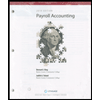
Projected benefit obligation (PBO): This is the estimated present value of future retirement benefits, accumulated based on the future compensation levels.
Plan assets: The assets which are used to satisfy the postretirement obligation are held as a pension fund by the trustee, to invest the employer contributions,
Funded status: The net difference of the total of projected benefit obligation (PBO) and pension plan assets are referred to as funded status. If the balance of PBO is more than plan assets, the difference is referred to as underfunded status, and reported as net pension liability on the
To Explain: How the funded status reported on the balance sheet.
Want to see the full answer?
Check out a sample textbook solution
Chapter 17 Solutions
INTERMEDIATE ACCOUNTING
- Accurate answerarrow_forwardPlease provide the answer to this general accounting question using the right approach.arrow_forwardOn January 1, 2015, Accounts Receivable was $45,000. Sales on accountfor 2015 totaled $186,000. The ending balance of Accounts Receivable was $56,000. What is the amount of cash collected from customers?arrow_forward
- Jackson Moving & Storage Co. paid $160,000 for 25% of the common stock of Sellers Co. Sellers earned a net income of $50,000 and paid dividends of $35,000. The carrying value of Jackson's investment in Sellers is:arrow_forwardSolve this question and accounting questionarrow_forwardCalculate the variable costing unit product cost?arrow_forward
- What is the answer?arrow_forwardPlease help me solve this general accounting question using the right accounting principles.arrow_forwardGarnet Electronics produces a product that has a variable cost of $4.00 per unit. The company's fixed costs are $40,000. The product is sold for $8.00 per unit, and the company desires to earn a target profit of $16,000. What is the amount of sales that will be necessary to earn the desired profit? A. $80,000 B. $60,000 C. $96,000 D. $112,000 MCQarrow_forward
 Intermediate Accounting: Reporting And AnalysisAccountingISBN:9781337788281Author:James M. Wahlen, Jefferson P. Jones, Donald PagachPublisher:Cengage Learning
Intermediate Accounting: Reporting And AnalysisAccountingISBN:9781337788281Author:James M. Wahlen, Jefferson P. Jones, Donald PagachPublisher:Cengage Learning Principles of Cost AccountingAccountingISBN:9781305087408Author:Edward J. Vanderbeck, Maria R. MitchellPublisher:Cengage Learning
Principles of Cost AccountingAccountingISBN:9781305087408Author:Edward J. Vanderbeck, Maria R. MitchellPublisher:Cengage Learning



